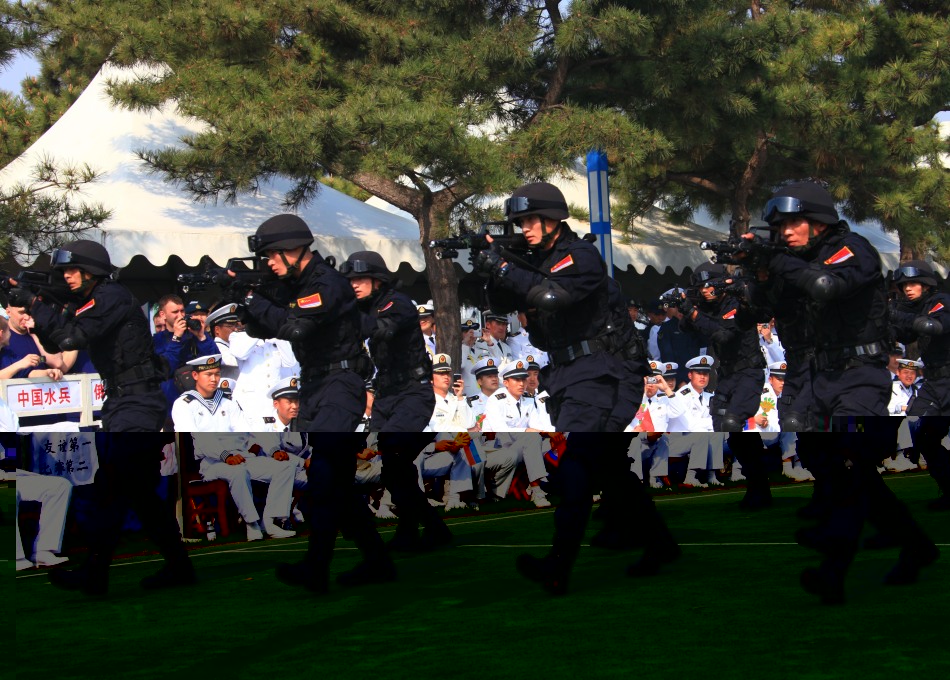
A Chinese-Russian joint military exercise, code-named “Maritime Cooperation 2012,” began yesterday in the Yellow Sea near Qingdao. This is the largest, most ambitious joint military exercise between the nations’ navies, and it is not just another step toward increasing cooperation and strategic trust between the two militaries; the move also has the obvious aim of issuing a clear warning to the United States and demonstrating their resolve to work together to protect core interests. China and Russia will collaborate to deal with new threats and challenges, countering the strategic encirclement of the U.S.’ “return to Asia.”
The military exercise is the largest for the Chinese and Russian militaries since 2005, with an unprecedented number of warships participating and both nations’ elite forces in attendance. The exercise will test the strength of both sides’ combat systems, as well as their ability to coordinate above and below the surface, practicing a variety of items, including joint anti-aircraft and anti-submarine defense, resupplying at sea, search and rescue, and saving hijacked ships. The grand scale and thoroughness of the exercise is a rare opportunity to augment the two nations’ naval strength and joint operation capabilities.
Even more noteworthy is that anti-aircraft and anti-submarine defense involves the use of radar signal and electronic communications technologies, both closely guarded military secrets. The Chinese and Russian navies’ cooperation in anti-aircraft and anti-submarine exercises thus suggests that there is a high amount of strategic trust between the two militaries, which are subsequently able to implement this type of deep military exchange. In recent years, the relationship between the Chinese and Russian militaries, as well as between the nations themselves, has continually developed, and the level of strategic cooperation has steadily risen. The deepening of mutual trust between the two nations and their militaries will be beneficial to both sides as they engage in further substantive collaboration, establish a stronger strategic cooperative relationship and continue to increase the level of mutual strategic support.
The U.S. has loudly announced its “return to Asia” policy, working unceasingly to strengthen its military alliances with Japan, South Korea, the Philippines, Australia and other Asian-Pacific nations. It has also conducted multiple joint military exercises with related nations in the East and South China Seas, making clear its intentions thereby to create a strategic encirclement of China and Russia, and thus presenting a threat to Chinese and Russian core interests that grows more pressing by the day. Therefore, by launching their largest-scale joint naval exercise in history, China and Russia have demonstrated the resolve of both nations to cooperate to protect the security and stability of Asia and the Pacific, and the event is of great significance in countering America’s “return to Asia” strategy, as well as breaking through the U.S.’ strategic encirclement of the region.
Both China and Russia are Asian-Pacific powers; both have an interest in and desire for maintaining peace, stability and development in the region; and both bear the responsibility of maintaining regional security and stability. This joint naval exercise, which brings cooperation on defense between the two nations to a new level, demonstrates abundantly the willingness and the ability of both nations to collaborate to uphold regional security. It may aid in preventing a hegemonic power from acting rashly, raising tensions and upsetting the peaceful state of affairs in Asia and the Pacific, making an immensely positive impact on regional and global peace and stability.

Leave a Reply
You must be logged in to post a comment.